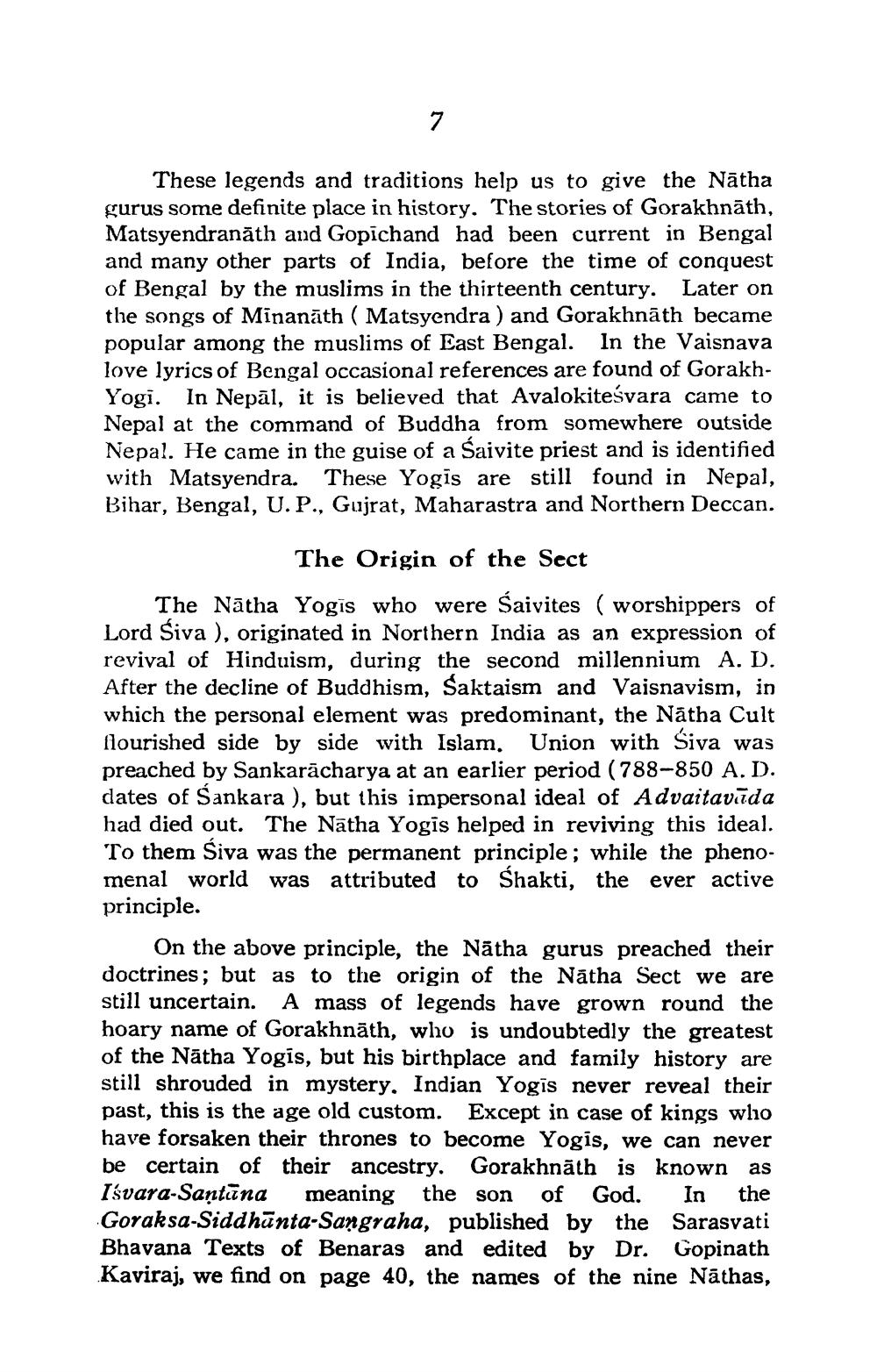________________
These legends and traditions help us to give the Nātha gurus some definite place in history. The stories of Gorakhnāth, Matsyendranāth and Gopichand had been current in Bengal and many other parts of India, before the time of conquest of Bengal by the muslims in the thirteenth century. Later on the songs of Minanāth ( Matsyendra) and Gorakhnāth became popular among the muslims of East Bengal. In the Vaisnava love lyrics of Bengal occasional references are found of GorakhYogi. In Nepāl, it is believed that Avalokitesvara came to Nepal at the command of Buddha from somewhere outside Nepal. He came in the guise of a Saivite priest and is identified with Matsyendra. These Yogis are still found in Nepal, Bihar, Bengal, U.P., Gujrat, Maharastra and Northern Deccan.
The Origin of the Sect The Nātha Yogis who were Saivites ( worshippers of Lord Siva ), originated in Northern India as an expression of revival of Hinduism, during the second millennium A. D. After the decline of Buddhism, Saktaism and Vaisnavism, in which the personal element was predominant, the Nátha Cult flourished side by side with Islam. Union with Siva was preached by Sankarācharya at an earlier period (788-850 A. D. dates of Sankara ), but this impersonal ideal of Advaitavāda had died out. The Nātha Yogis helped in reviving this ideal. To them Śiva was the permanent principle; while the phenomenal world was attributed to Shakti, the ever active principle.
On the above principle, the Nātha gurus preached their doctrines; but as to the origin of the Nātha Sect we are still uncertain. A mass of legends have grown round the hoary name of Gorakhnāth, who is undoubtedly the greatest of the Nātha Yogis, but his birthplace and family history are still shrouded in mystery. Indian Yogis never reveal their past, this is the age old custom. Except in case of kings wlio have forsaken their thrones to become Yogis, we can never be certain of their ancestry. Gorakhnath is known as Išvara-Santūna meaning the son of God. In the Goraksa-Siddhānta-Sangraha, published by the Sarasvati Bhavana Texts of Benaras and edited by Dr. Gopinath Kaviraj, we find on page 40, the names of the nine Nāthas,




